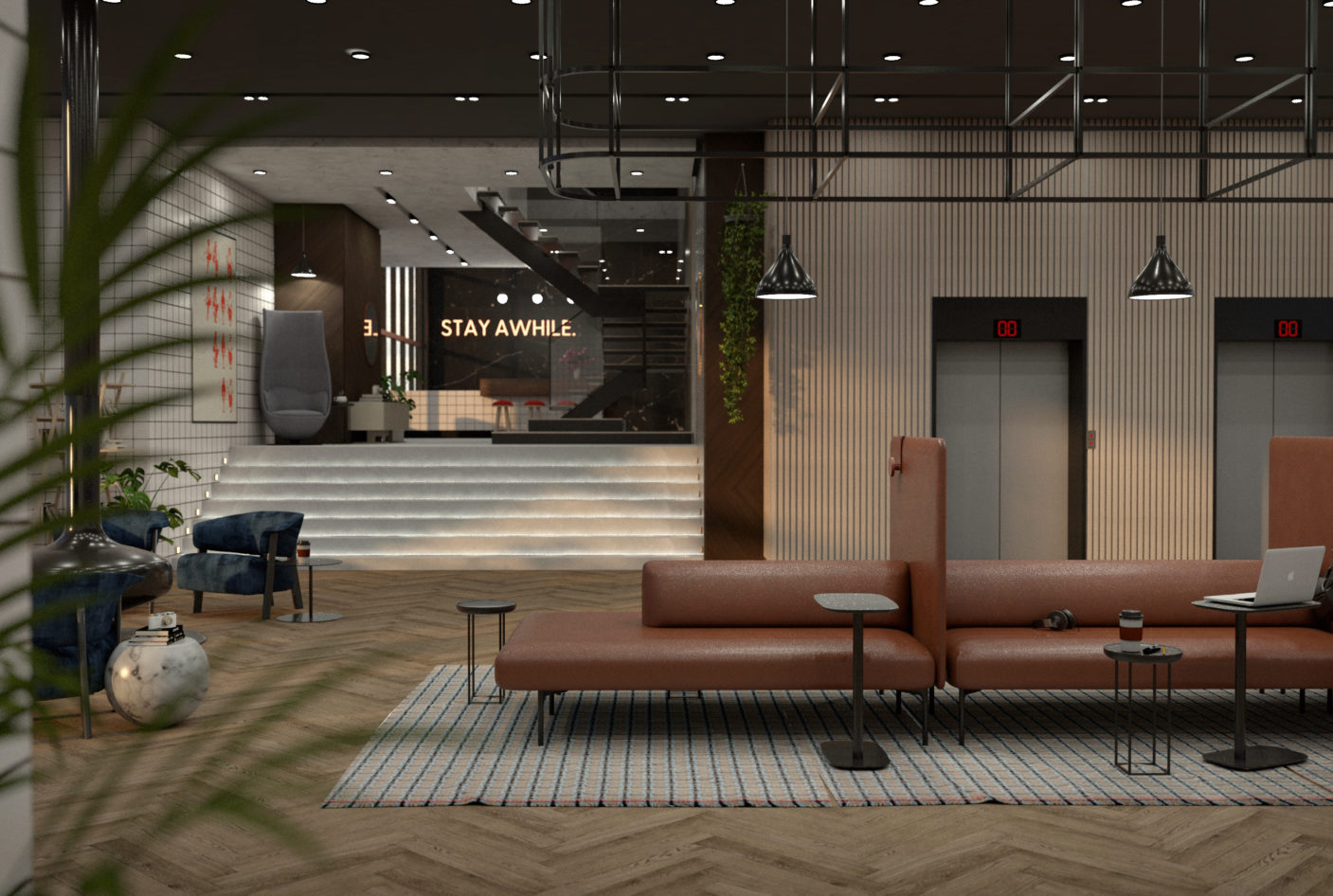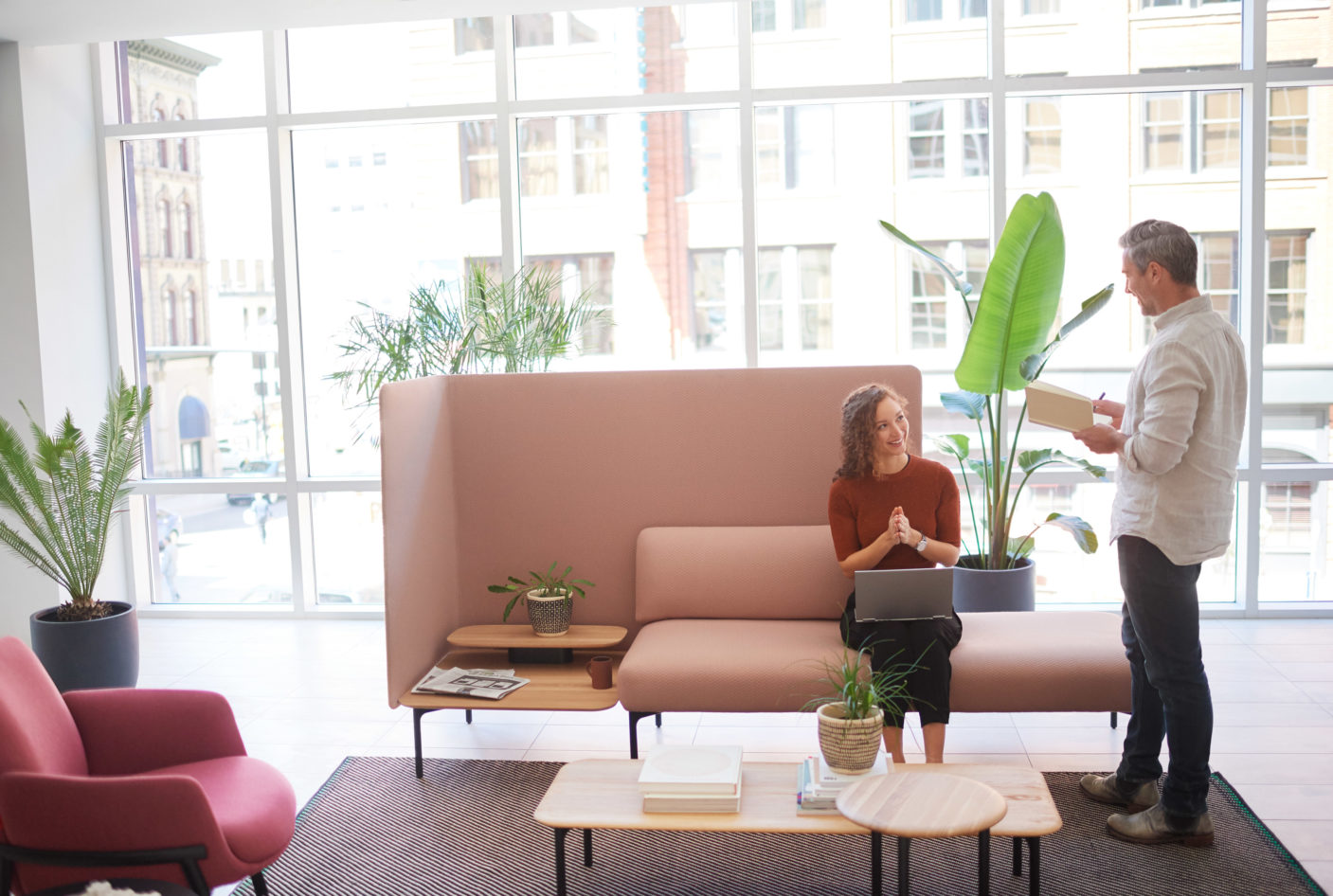
Brand identity is very important to be crystal clear defined because it depicts company’s values such as mission, vision and culture. In other words, it is the corporate persona. It affects all the organic structure, infrastructure and people.
Brand identity is very important to be crystal clear defined because it depicts company’s values such as mission, vision and culture. In other words, it is the corporate persona. It affects all the organic structure, infrastructure and people. Thus, it is crucial workspaces to be created based on company’s identity in order every guest and employee feel and see the values of this company.
The effective way to transmit the values into the workplace is to identify which the values and the goals are. Thus, the work environment would offer a unique experience to each humam.
But, how you could incorporate your brand in the workplace? Haworth started by identifying its goals for the showroom renovation. Three objectives fueled the design, bringing its brand to life via workspace design and incorporating its global research team’s latest findings:

A Welcoming Destination
Hospitality in the workplace emerges from multiple perspectives—welcoming customers, employees, suppliers, and guests in ways that visually express each company’s combination of design leadership, family ownership, and global expertise.
The main entrance sets the stage with a vibe that delivers the first impression. It should be designed to not only reflect company’s brand, but also inspire the customers with versatile, thoughtful solutions—this is where workplace hospitality begins. This entry point is a combination of spaces that welcome guests, enable socializing and dining, and support collaborative work.
Hospitality in the workplace extends beyond the entry—it is infused through the entire environment. It’s about hiring Gen Z, retaining Millennials, and keeping Gen Xers and Baby Boomers longer as mentors and sharers of historical context. It’s also about creating destination workplaces where boundaries between work, social time, and downtime begin to blur.

Creativity, Coworking and Innovation
As companies look for new ways to foster creativity and innovation, they are examining how to bring the coworking concept in-house by adopting coworking-like philosophies, amenities, and work policies. Coined “corpoworking,” the approach is serving as a talent attraction and engagement tool for a growing number of companies. Coworking has become less about the sharing of infrastructure and real estate cost, and more about belonging to a community—sharing ideas with people, and melding life and work in a sustainable way. Its participants value flexibility and choice. And technology enables people to work where they want, when they want, and surrounded by whom they want.
Haworth’s global research team has determined that if we never rest, can’t focus, or don’t work with each other, we miss out on finding new ideas and fail to execute them. Organizations that value and design workplaces supporting these activities can improve their innovation efforts.
Enabling people to expand on opportunities for both divergent thinking (spontaneous, expansive idea generation) and convergent thinking (focusing, narrowing of ideas) is critical for innovation to happen. Haworth has identified four zones that exemplify its research in a “corpoworking” space. All four zones support a spectrum of needs from focus to restorative to collaborative, whether for individual or group activities.

Nurture the Heart, Mind and Body
Well-being encompasses more than physical health. It also includes psychological comfort and cognitive support. A key strategy behind workplace design for well-being is to offer people choice—choosing the work environment that best suits their needs to feel more engaged and connected. The diversity of choice within a space stems from the culture of your organization, and, oftentimes, from the sub-culture of the team occupying the space. Is the team highly process driven? Do they thrive when collaborating? Are they highly competitive and work solo or do they prefer a combination of restorative and open areas?
Photographic material: Haworth